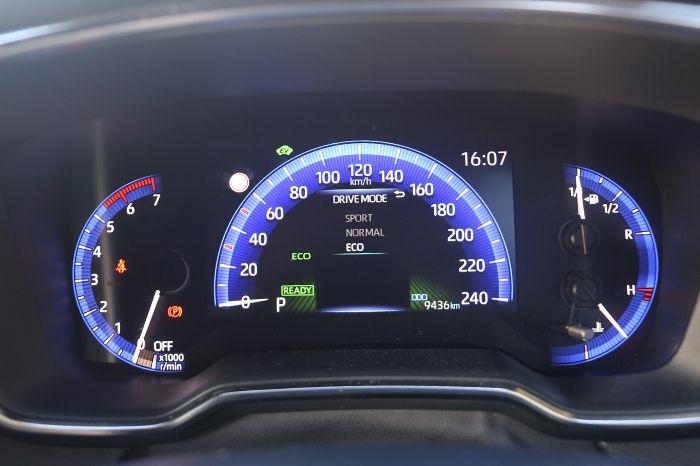A hybrid vehicle is very simply a car, van, bus or lorry (or even a bicycle/motorcycle, in some instances) that uses more than one source of propulsion. This means that any vehicle that runs purely on petrol, on diesel or on electric power is not a hybrid; it is the very nature of carrying two or more types of motive power, one of which is usually electric power, that creates a hybrid. Yet, within the hybrid category itself, there are a wealth of different types of car – mild hybrid, range-extender hybrid, plug-in hybrid, fuel-cell hybrid and so on. And one of the most controversial is the ‘self-charging’ hybrid, which we’re going to look into here.
What is a self-charging hybrid?
The phrase ‘self-charging hybrid’ seems to have been appropriated by Toyota and Lexus for its wide range of series-parallel or power-split hybrid models, under the Hybrid Synergy Drive badging. It causes much consternation in the online world, with fans of the technology arguing that the term self-charging is correct, and opponents saying it is misleading. Wherever you stand on this grey area, though, the simplest way of defining a self-charging hybrid is to say it is a hybrid vehicle in which there is no facility to plug in an external power source to recharge its battery packs. That is why Toyota and Lexus reckon it’s OK to call their cars self-charging hybrids, as it is the onboard internal combustion engine and recuperation of otherwise-lost kinetic energy that charges the battery packs, not an external power source.
What are the three main types of self-charging hybrid?
The first is the parallel hybrid vehicle. This features an electric motor and an internal combustion engine, which are linked together in such a way that they can either power the vehicle individually or both together. It doesn’t lead to a huge amount of electric-driving range, typically only a kilometre or so, but they do have some EV-driving capability – examples of parallel hybrids include the first-generation Honda Insight.
A newer type of hybrid is the mild parallel hybrid. These are often known as MHEVs (mild hybrid electric vehicles) and are typically (but not always) composed of an internal combustion engine plus a 48-volt secondary electrical system. The idea here is that the car isn’t actually designed to run on its electric power alone at all (albeit, MHEVs can autonomously ‘coast’ engine-off for short distances, such as if you’re off the throttle on the motorway, for example), but rather the electrical system provides extended auto start-stop functionality, power-assistance during acceleration and regenerative braking effects during deceleration to keep the battery pack topped up. There are a lot of MHEVs on sale nowadays.

In the Toyota/Lexus Hybrid Synergy Drive, which is a power-split or series-parallel hybrid, it’s an evolution of the parallel hybrid. Again, there are typically two ‘motors’: one internal combustion engine and one traction-electric unit, with the power from these forms of propulsion shared to the drive wheels via a power-split device (normally a simple planetary gear set). The ratio of shared drive is 100 per cent from the combustion engine or 100 per cent from the traction-electric, with anything in between possible. And while this is happening, the combustion engine serves as a generator to charge up the battery pack.
Toyota/Lexus adds a second electric motor/generator connected to the planetary gear set in its Hybrid Synergy Drive, which is the companies’ Electric Continuously Variable Transmission (eCVT). Through this system, Toyota and Lexus claim that their self-charging hybrids can drive for extended periods on electric power alone, as the cars will tend to revert to EV drive in low-speed traffic – such as city commuting. Cars fitted with this technology include the Toyota Prius, the Toyota C-HR, the Toyota Corolla, the Toyota Auris, the Toyota Yaris, the Lexus CT 200h, the Lexus IS 250h, the Lexus ES 300h, the Lexus RX 450h and the Lexus LS 600h, among many more. The thing to remember here, though, is that the vast majority of the energy to travel still comes from the petrol in the fuel tank, as the engine acts as an electricity generator.